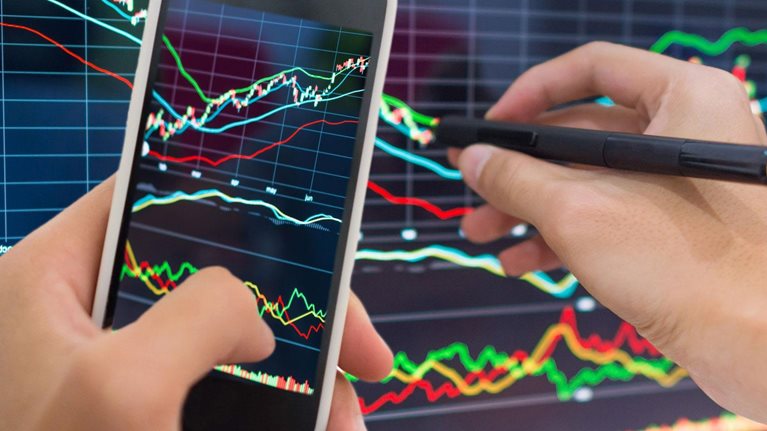Much of the buzz surrounding fintech focuses on the potential of new technologies to transform ways of doing business in banking and other industries. But less is said about how these can be used to achieve another, no less sweeping, aim: making financial services available to more people by lowering costs and barriers to access. In this interview with McKinsey’s Rik Kirkland, PayPal president and CEO Dan Schulman talks about driving financial inclusion, democratizing charitable giving, living his company’s values, and reinventing the sector for the mobile age. An edited version of his remarks follows.
Interview transcript
When people don’t have hope, or they don’t feel that people are listening to them, or they don’t have respect, that’s when they start to turn inward. Things like democratizing financial services, where you can make managing and moving money a right for everybody, not just something for the elites—that actually can improve somebody’s life. That can give them more money, give them more peace of mind, and that is something incredibly important.
The inclusive potential of fintech
There are two billion people in the world that live outside of our financial system. In the United States, there are over 70 million people who live outside the financial system. This is a global issue of immense proportions. And the things that we take for granted—paying a bill, cashing a check, sending money to loved ones, getting credit—all of those things, if you’re outside the financial system, are incredibly time consuming. You actually have to travel to the location, wait in line to cash your check. And it’s very expensive.
Stay current on your favorite topics
The typical underserved population spends 10 percent of its disposable income on unnecessary fees and interest rates. Ten percent. That’s the same amount the population spends on food. With technology, that’s ridiculous.
If you can use fintech the right way, you actually have built-in distribution in the form of smartphones. You have software platforms that connect to them. Therefore, the cost of basic transactions can be lowered by as much as 80 to 90 percent. If you can do that, what you can do is you can make transactions fast, simple, easy to understand, and less expensive—much less expensive. If you can make them less expensive and create ways to incent savings, what you can then do is give back money to consumers. And these are populations that desperately need more flexibility in their lives.
Making it easier to give
When we think about democratizing financial services, we also want to democratize giving. People want to give. This is a world where people have some degree of cynicism about what’s going on. We actually choose to be pretty optimistic.
We want people to be part of their communities, to be able to donate. Interestingly enough, we did over $7 billion of donations [in 2016] through the PayPal platform alone to charities around the world. In 181 different countries, more than eight million people donated through PayPal.
Whether they’re small donations or larger donations, we make it very easy both for the individual to donate and for the charity to accept those donations. We give the receipts back to the consumer. So we take a lot of the paperwork away from the charity, to make it easy to donate and give over the platform.
On a mission
I’m not the first CEO to say this, but if you have a real mission where it can make a real difference and people believe it, you attract great talent. [Employees are] doing something not only because they mentally understand it’s important but because they feel it in their heart. When you can combine those two things, then you have people who will kill themselves to serve customers the right way.
We are a values-driven company, and we take that very seriously. These are not things that hang on our wall. To give you an example, when North Carolina passed the HB2 bill, it afforded government the right to discriminate against sexual identity or sexual orientation. We had just announced we were going to put a 400-person center in Charlotte. It was a pretty easy decision for us to pull out.
Now, it was lonely. There were a lot of people who might have disagreed with that decision. But we felt, if you’re really going to talk about values of being inclusive, to me, a fundamental thing is you just don’t discriminate against anyone in our population for any reason. I felt very strongly that if we didn’t act on that, that our employees and even our customers would see an inconsistency between the mission and our values. That’s just something that we did. And I would do that 100 times out of 100.
Reinventing finance for the mobile era
We’re also thinking about how you reinvent financial services in an era of mobile and software and Internet connectivity, where everybody has the power of a bank branch in the palm of their hands. It’s a very expansive, very different strategy than what we’ve had before. There’s a huge market opportunity.
We’ve seen an evolution. I brought a lot of passion around this vision and mission with me. But I spent the first six months when I got to PayPal just listening. Then, based on all the feedback—from analysts, shareholders, customers, merchants, employees—we said, “Look, we need to be much more than just a button. That’s a great service we provide. But it’s not enough. It’s not what we as a company can do to make a real difference in the world.”
We have tremendous scale, so people can count on us. We’ll do more than six billion transactions through the platform this year. We’re a proven entity. We have full compliance efforts. Fraud, risk management—these are difficult things to do. Payments is a hard business. We are really the pioneers in online, digital, and mobile payments. There’s a tremendous trust in our ability to go and do this.

A digital crack in banking’s business model
Merchants are looking to do much more. They’re looking for people who can actually go online and offline. The big thing we bring is not just a platform they can count on but 200 million consumers who use PayPal. It’s one thing to build an application. That’s hard enough to go and do, and we’ll power that application. But if you build it and nobody comes, that’s a disaster.
We take those 200 million customers we have, and we use technology that allows us, if a customer opts in, to seamlessly authenticate that consumer on to a merchant application. The big drop-off is people don’t want to sign up for new apps. They have plenty of apps. That combination of a solid platform and a huge consumer base that we can bring to that app is a pretty compelling proposition.


